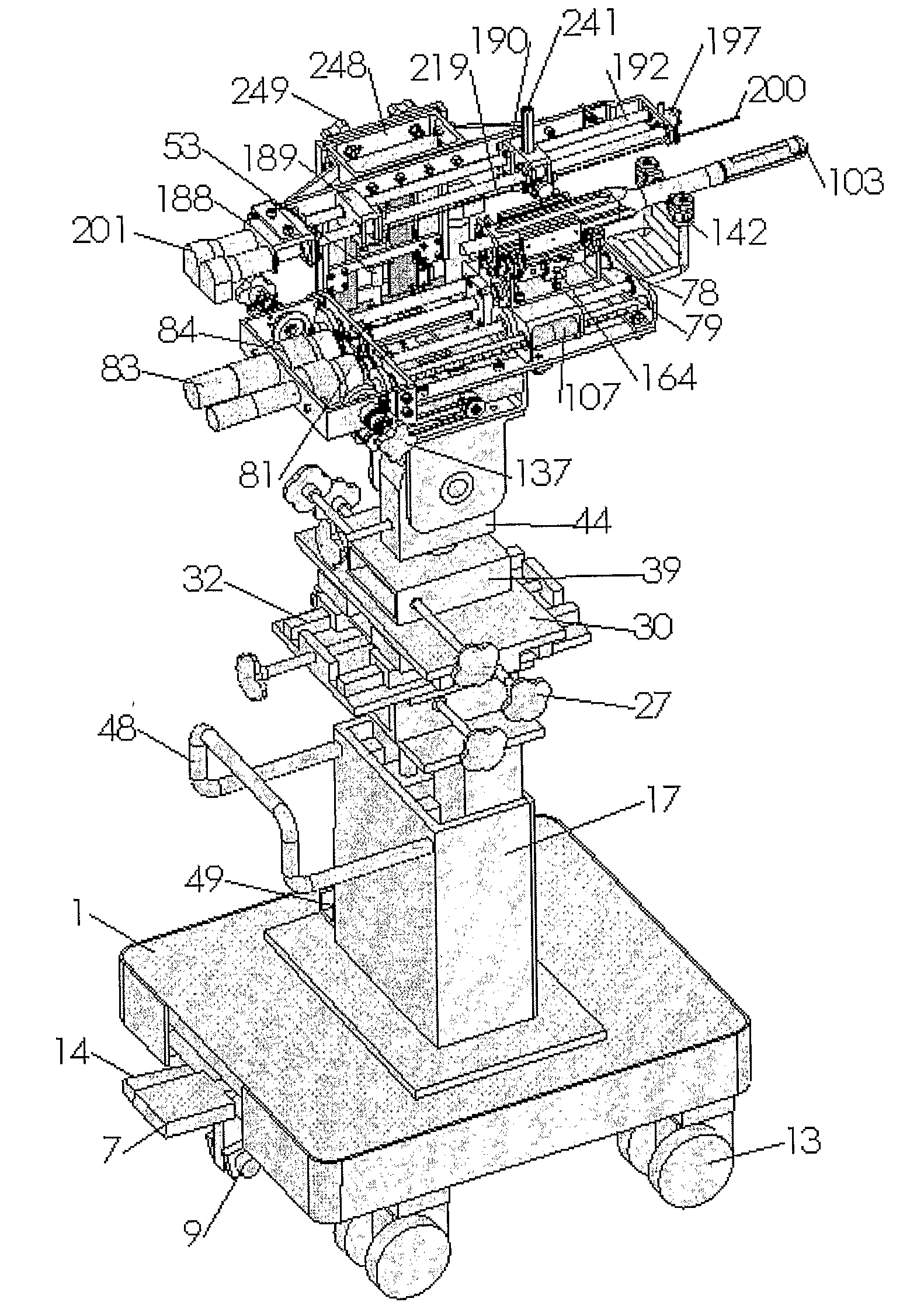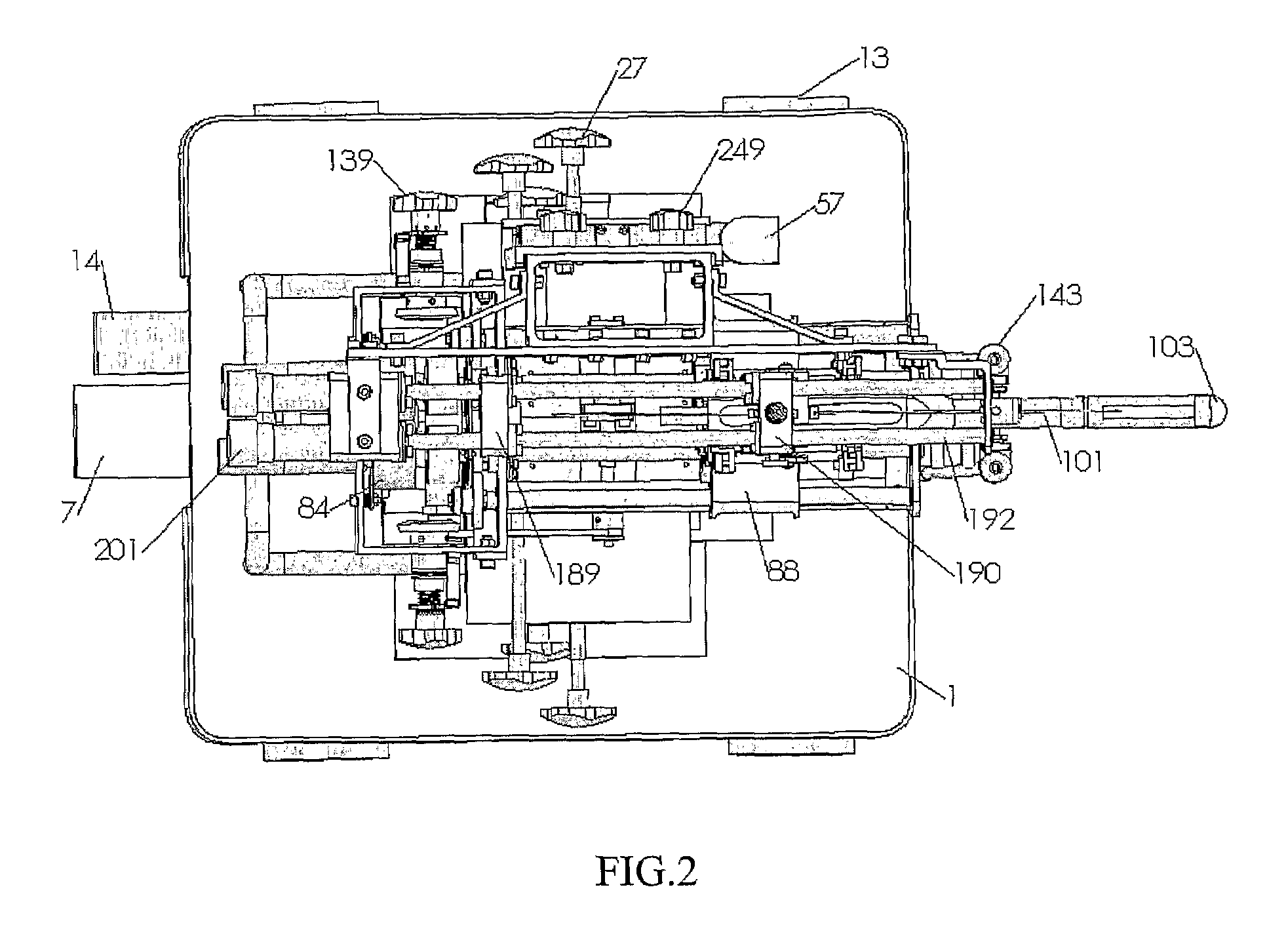Image-guided therapy delivery and diagnostic needle system
a technology of image-guided therapy and needle system, which is applied in the field of radiation treatment instruments, can solve the problems of long recovery time, side effects, incontinence and impotence,
- Summary
- Abstract
- Description
- Claims
- Application Information
AI Technical Summary
Benefits of technology
Problems solved by technology
Method used
Image
Examples
Embodiment Construction
[0089]Preferred embodiments of the invention will be set forth in detail with reference to the drawings, in which like reference numerals refer to like elements throughout.
[0090]FIG. 1 to FIG. 4 show the perspective view, top view, side view and back view of 3D assembly of the first preferred embodiment, in which radioisotope seeds are delivered into the patient's body for tumor treatment, for instance, prostate cancer low dose brachytherapy. All the five models are shown including needling mechanism 201, 2DOF robot 53, ultrasound probe driver 83, 5DOF passive platform 32 and the cart 1.
[0091]There are a total of seven DC motors in the system, to obtain cannula insertion with rotation, stylet movement for pushing the seeds into the cannula and implanting in the body, the needling mechanism's left-right and up-down motions for positioning along x and y axis, ultrasound probe's translation and rotation for translational scan and sagittal scan.
[0092]There are a total of three force sen...
PUM
 Login to View More
Login to View More Abstract
Description
Claims
Application Information
 Login to View More
Login to View More - R&D
- Intellectual Property
- Life Sciences
- Materials
- Tech Scout
- Unparalleled Data Quality
- Higher Quality Content
- 60% Fewer Hallucinations
Browse by: Latest US Patents, China's latest patents, Technical Efficacy Thesaurus, Application Domain, Technology Topic, Popular Technical Reports.
© 2025 PatSnap. All rights reserved.Legal|Privacy policy|Modern Slavery Act Transparency Statement|Sitemap|About US| Contact US: help@patsnap.com



